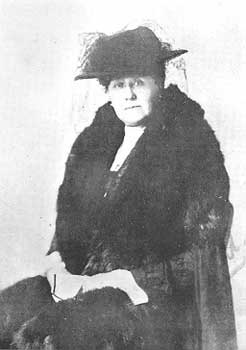 |
| Hannah Riddell |
Life of Riddell
Hannah Riddell was a British woman who devoted her life to caring for patients of leprosy in Japan. When she was younger, she and her mother established private school, because they need money. The school sometimes succeeded, but in 1889 it went into bankruptcy. Then, her next job was as superintendent for the YMCA (Young Women’s Christian Association). In 1890, she was selected as missionary to Japan. At the same time, she heard about Japan from her friend. She got good impression of Japan. Therefore, she decided to go to Japan.
In 1891, she saw the leper at the Honmyoji temple in Kumatmoto. When she saw the leper begging for mercy (like “help me”), she made up her mind to devote her life to their care. She decided to establish Kaishun hospital. Then, she did donation work. But Japanese didn't know about her. She behaved like upper class and attended upper class party. She was also supported by British, in and 1895 Kaishun hospital was complete. Next she set the policy, but she was not doctor. She didn't know about leprosy and way of cure. At that time nobody also knew about that. She thought that the best way of cure for leprosy was sexual abstinence and to quarantine these patients in Kaishun hospital. Because she didn't like sexual relations, and her idea is that men and women didn't get along with each other.
In 1918 she established institute (lab) of leprosy in Kaishun hospital, thanks to a lot of donations. Plenty of famous persons donated to this hospital, because Riddell made efforts for helping leper. She gathered scholars and doctors to search and look for a remedy. She was sometimes greedy, but lepers had good impression of her, because although many people despised lepers, she interacted with them with a smile. After her death, the effort was continued by niece “Ada Hannah Wright”.
Summary of discussion
My questions were “If you were healthy person in this time, would you help the leper?” and “What do you think was the best kind of cure?”
My discussion member’s idea is to help them. It stands to reason that people should help them, because we are people. If you help the leper, you might be ignored by other healthy person. Most people are influenced by others but some people have a strong heart.
We don’t know about leprosy and medical science. Maybe we would try to do donation work and encourage to them. We would also establish medical facility. And then, we spread that the leprosy is safe.
The discussion is important for me, because member’s views were different from mine. I can soak up other information.
Reflection
I think Riddell was great person, because in this time most of people ignored and despised lepers, but she devoted her life to caring for them. Then, nobody knew whether this flu infected other people or not. In addition, Japan is not her hometown, but she helped them. Thanks to her efforts, all of Japanese minds was becoming better for medical treatment. Therefore, Japanese government attached importance to the medical treatment and supported medical facilities. Now Japan has good medical technologies.
References
“Hannah Riddell” Wikipedia, accessed July, 2014
http://en.wikipedia.org/wiki/Hannah_Riddell
“Hannah Riddell by Jingo Tamotsu”, accessed July, 2014
http://anglicanhistory.org/asia/jp/riddell1937/text.html
